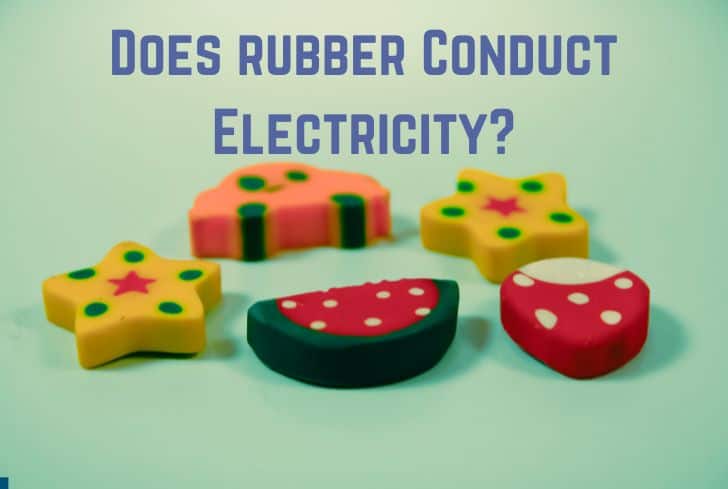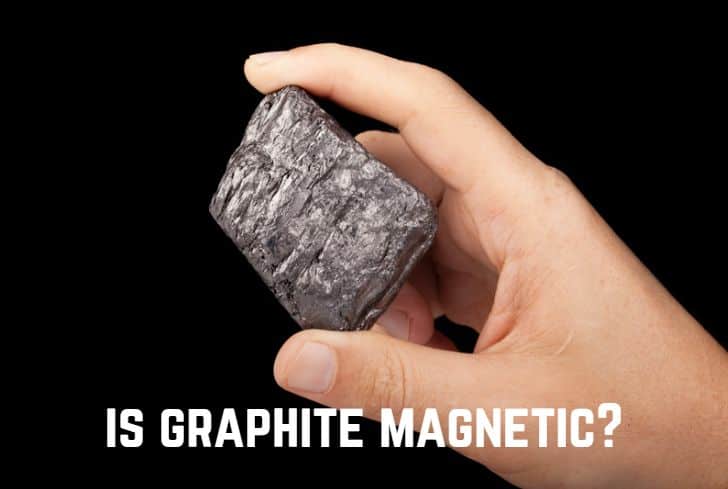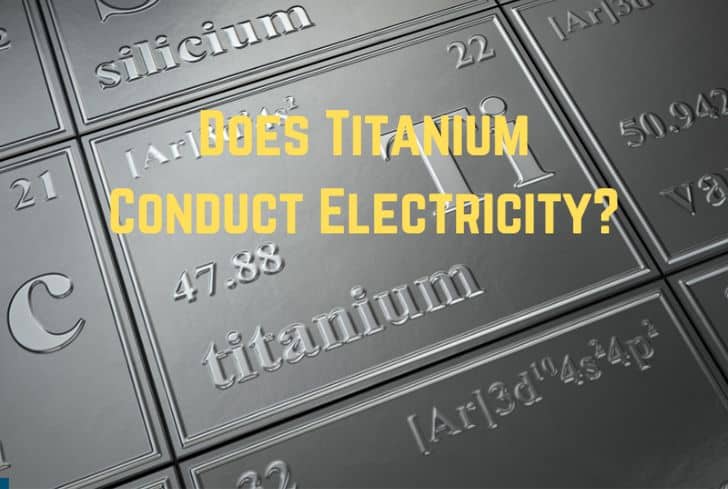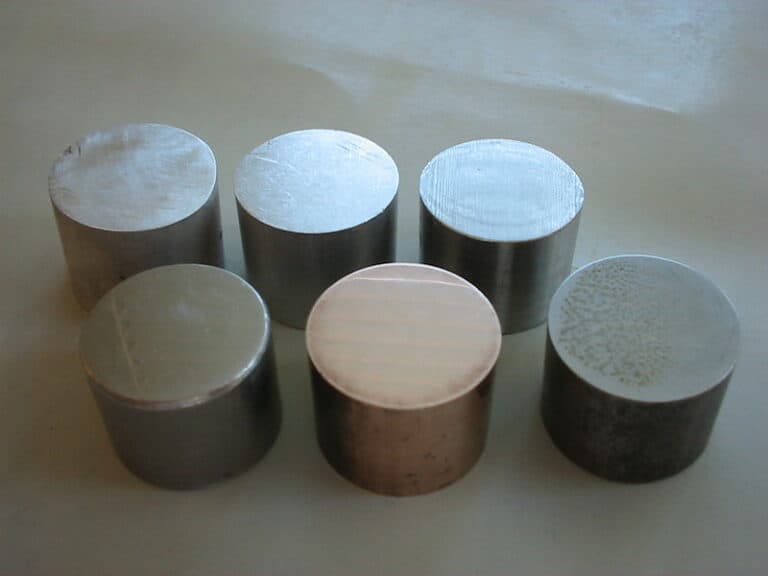Is Graphene Magnetic? (Answered)

Graphene is an allotrope of carbon. It consists of a single layer of atoms arranged in a hexagonal lattice nanostructure. Graphene is the thinnest two-dimensional material in the world and various other properties that make it quite valuable: the global graphene industry was worth $9 million in 2012.
Have you ever wondered if graphene is magnetic? In this article, we are going to discuss just that. We will begin by talking about magnetism and whether graphene exhibits that property. We will also talk about graphene’s compounds and other properties (such as conductivity).
Read: Is Silver Magnetic? (No. It Won’t)
Can a Magnet Attract Graphene?
Intrinsically, graphene is non-magnetic, so a magnet cannot attract graphene. This is because it is a pure carbon material, having no net magnetic moment. However, scientists have discovered that it is possible to make graphene magnetic by altering its structure/composition.
Let us first understand what magnetism is. Magnetism is a force caused by the motion of electric charges. Every substance is made up of atoms. These atoms have electrons (particles that carry an electric charge) that circle the atom’s center, called the nucleus.
In some substances like iron, the electrons spin in the same direction. This allows their magnetic fields to combine, and it produces a magnetic field extending beyond the atoms. These objects are strongly attracted to magnets and are called ferromagnetic.
However, in most substances, equal numbers of electrons spin in opposite directions. This cancels out their magnetism, and they are not attracted to a magnetic field. These include things like cloth, wood, paper, etc., and are called diamagnetic.
Graphene has a honeycomb structure consisting of carbon atoms. Each atom is connected to its three nearest neighbors by σ-bonds and a delocalized π-bond. Due to the Kekulé structure of hexagonal carbon cages, graphene has no unpaired electrons.
The spins of the electrons in the π bonds are paired, resulting in no overall magnetic moment for the graphene sheet. Therefore, graphene is non-magnetic. However, graphene can be made magnetic via different methods, which we will discuss later.
Is Graphene Oxide Magnetic?
Yes, graphene oxide is weakly magnetic. However, its magnetic properties vary depending on the specific synthesis method used. Moreover, the presence of certain impurities or functional groups can also affect it.
Graphene oxide is a unique material that involves a single monomolecular layer of graphite with various oxygen-containing functionalities such as epoxide, hydroxyl groups, etc. It has various applications in electronics, optics, chemistry, energy storage, and biology.
Initially, it was seen as a simple and cheap step in preparing graphene films. However, later research demonstrated that graphene oxide has many unique properties that make it valuable.
We can control graphene oxide’s optical transparency and electrical & thermal conductance by chemically attaching functional groups to its surface; this cannot be done with graphene. Graphene oxide is also different when it comes to magnetism.
By introducing defects, it disrupts the regular hexagonal lattice of graphene. These defects, along with the presence of functional groups, can create localized magnetic moments. This leads to weak magnetism in graphene oxide.
However, it is important to note that this magnetic behavior is quite weak compared to traditional magnetic materials. Still, it is a useful property, and researchers have been exploring its potential in various applications, including biomedicine, magnetic sensors, and catalysts.
Is Graphene Conductive?
Yes, graphene is highly conductive. In fact, graphene’s electrical conductivity is one of the key properties that make it so valuable, leading it to be widely used in electronics and technology. This high conductivity is due to its unique electron structure.
For a material to conduct electricity, it must have free electrons that can move the electric charge from one place to the other. Metals have ions that form a giant structure known as the “sea of delocalized electrons”, which are able to move freely.
In graphene, each atom is connected to its three nearest neighbors by σ-bonds and a delocalized π-bond, forming a hexagonal lattice. The π electrons are the electrons in the p orbitals that lie above and below the plane of the graphene sheet.
These form a delocalized electron cloud, and this cloud of π electrons is free to move across the entire graphene lattice. So, this essentially creates a highly mobile charge carrier system. Electric current can therefore flow with very little resistance.
Thanks to its unique electron structure, graphene has extraordinary electrical conductivity, which is much higher than other materials (including traditional semiconductors & metals). This is why graphene is widely used in electrical applications, such as high-speed transistors, conductive coatings, energy storage devices, etc.

How to Make Graphene Magnetic?
Graphene is intrinsically non-magnetic. However, we can make it magnetic by altering its chemical composition or structure. This usually involves methods like magnetic doping, introducing magnetic substrates, or adding defects to the graphene lattice.
We can make graphene magnetic through any of these methods:
- Proximity-Induced Ferromagnetism: This approach involves bringing graphene into close contact with a ferromagnetic material. The magnetic properties of the ferromagnet then influence the electronic structure of graphene, inducing its own ferromagnetism upon it. Usually, graphene is layer onto a magnetic insulator like yttrium iron garnet. The graphene then gains ferromagnetism that persists even after the removal of the YIG effect. This method is great for inducing ferromagnetism on large scales of graphene.
- Defect-Induced Magnetism: This method introduces structural irregularities or defects in the graphene, such as vacancies or grain boundaries. These break the perfect symmetry of the lattice and lead to the emergence of localized magnetic moments. The unpaired electrons at these defect sites can interact and effectively lead to magnetic behavior. This method is usually weak and dependent on temperature, but it it still a simple way of making graphene magnetic.
- Edge-state spins of nanographene: These induce magnetism in graphene structure due to the upaired electrons achieved at the nanoscale. The unpaired electrons are obtained by disrupting the Kekulé structure. Researchers can control the nanographene’s shape and width to tailor the edge-state spins and their magnetic properties. This is another feasible method of making graphene magnetic without external dopants or magnetic substrates.
- Twisted bilayer graphene: It refers to two layers of graphene stacked on top of each other with a specific twist angle between them. At certain “magic angles”, these can exhibit various intriguing features, including magnetism. When two layers of graphene are stacked with a precise twist, it leads to the emergence of localized magnetic moments and hence magnetism. We can adjust the twisting angle to alter the magnetic properties.
Magnetic graphene can have various applications: wastewater treatment, energy storage technologies, biomedical applications. Moreover, it can be used in spintronics, which uses an electron’s spin rather than its charge to process, transfer, and control signals.
This technology could lead to incredibly fast data processing and higher energy efficiency. Graphene already has excellent electrical properties, and combing that with magnetism will lead to even more brilliant technologies.
Is Graphene Toxic?
Currently, research is still going on regarding the toxicitiy of graphene. In itself, it is usually considered to be non-toxic and biocompatible. However, in the form of nanoparticles, it can potentially be toxic.
In its pristine form, pure graphene is usually considered to be non-toxic. It it also believed to be biocompatible (not harmful to living tissue) and can therefore be used in applications like drug delivery or imaging.
However, scientists are still trying to figure out the long-term effects and possible accumulation of graphene in the human body. There are further concerns about graphene when it exists in the form of nanoparticles. This is especially the case when it is chemically modified or heavily functionalized.
These modified forms of graphene can interact with living organisms in a very different way and possible cause adverse effects. Lingling’s 2016 research revealed that graphene-family nanomaterials (GFNs) can cause DNA damage, oxidative stress, etc.
Both researchers and regulatory bodies are looking into the potential risks of graphene exposure. This is especially crucial for industrial and large-scale commercial settings.
In general, we can say that graphene’s toxicity is still under study, and those working with it should take proper precautionary steps.
Properties and Uses of Graphene
These are the properties of graphene:
- Electrical Conductivity: As we have been discussing, graphene has exceptional electrical conductivity due to its delocalized π-electron clouds.
- Strength: Despite being lightweight, graphene is incredibly strong and its tensile strength is over 100 times greater than steel.
- Flexibility: Graphene is a highly flexible material. This allows it to be integrated into various electrical and wearable technologies.
- Transparency: Since graphene consists of a single layer of carbon atoms, it is quite transparent, allowing 97% of light to pass through.
- Thermal Conductivity: Besides conducting electricity, graphene is also a great conductor of heat.
These are the uses of graphene:
- Electronics
- Energy Storage
- Biomedical Applications
- Sensors
- Composite Materials (plastics, coatings)
Conclusion
In this article, we have looked at the magnetism of graphene. Since its electron structure does not have any unpaired electrons, graphene is intrinsically non-magnetic. However, we can make it magnetic by changing its chemical composition or structure.






